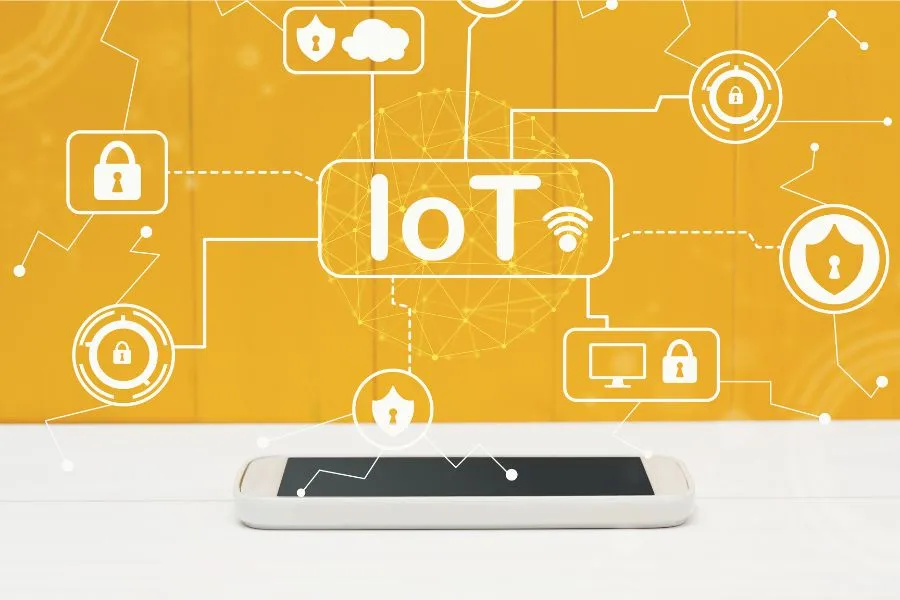The Rise of IoT Devices and the New Challenges for Data Security
The proliferation of Internet of Things (IoT) devices has revolutionised many aspects of daily life, from smart homes to industrial automation. These devices, interconnected and embedded with sensors, software, and other technologies, facilitate data sharing and collection, increasing efficiency, convenience, and innovation. However, this rapid expansion has also introduced significant challenges in data protection, raising concerns that demand urgent attention.

Increasing Attack Surface
The sheer number of IoT devices contributes to an increased attack surface, offering cybercriminals multiple entry points. Unlike traditional computing devices such as PCs and smartphones, IoT devices often lack robust security mechanisms due to their limited processing power and memory. This makes them more vulnerable to exploitation. A compromised IoT device can act as a gateway for attackers to infiltrate larger networks, leading to data breaches and other cyber threats.
Inadequate Security Measures
Many IoT devices are designed with convenience and cost-efficiency in mind, often at the expense of security. Manufacturers often ship devices with default passwords, which users rarely change. This oversight makes it easy for attackers to gain unauthorised access. Additionally, the absence of regular security updates and patches exacerbates the risk, as vulnerabilities remain unpatched, providing an open invitation to hackers.
Data Privacy Concerns
IoT devices collect vast amounts of data, ranging from personal information to sensitive operational data. This data, if not properly secured, can be intercepted, manipulated, or stolen. The lack of data transmission and storage encryption in many IoT devices is a significant threat to privacy. For example, smart home devices such as cameras and voice assistants can be hijacked, leading to unauthorised surveillance and data collection.
Interoperability and Standardization Issues
The IoT ecosystem is highly diverse, encompassing a wide array of devices from different manufacturers, each with its own protocols and standards. This lack of interoperability complicates the implementation of uniform security measures. Without standardised security protocols, it becomes challenging to ensure consistent and comprehensive protection across all devices, leaving gaps that cybercriminals can exploit.
Botnets and Distributed Denial of Service (DDoS) Attacks
IoT devices are increasingly being targeted to form botnets—networks of compromised devices controlled by attackers. These botnets can be used to launch Distributed Denial of Service (DDoS) attacks, overwhelming targeted systems with traffic and causing widespread disruption. The Mirai botnet attack in 2016, which leveraged IoT devices to disrupt major websites and services, highlighted the potential scale and impact of such threats.
Regulatory and Compliance Challenges
The rapid pace of IoT adoption has outpaced the development of regulatory frameworks and standards. This regulatory gap creates a fragmented landscape where different regions and industries operate under different guidelines. The absence of comprehensive regulations hampers efforts to implement consistent security practices, making it difficult to hold manufacturers and users accountable for data security lapses.
Mitigating the Challenges
Addressing the data security challenges posed by IoT devices requires a multifaceted approach:
- Improved Device Security: Manufacturers must prioritise security in the design and development of IoT devices, incorporating features such as secure boot, encrypted communication, and regular software updates.
- User Awareness and Education: Educating users about the importance of changing default passwords, applying updates, and practising good cyber hygiene is crucial in mitigating risks.
- Standardisation and Regulation: Developing and enforcing industry-wide standards and regulations can help ensure a baseline level of security across all IoT devices.
- Robust Network Security: Implementing strong network security measures, such as firewalls, intrusion detection systems, and segmented networks, can limit the impact of compromised IoT devices.
- Collaboration and Information Sharing: Public and private sector collaboration, along with information sharing about threats and vulnerabilities, can enhance collective security efforts.
Active Events
Best Tips to Create a Job-Ready Data Science Portfolio
Date: Feburary 26, 2025 | 7:00 PM(IST)
7:00 PM(IST) - 8:10 PM(IST)
2811 people have registered
Transforming Development: The AI Edge in Full Stack Innovation
Date: Feburary 27, 2025 | 7:00 PM(IST)
7:00 PM(IST) - 8:10 PM(IST)
2811 people have registered
Bootcamps
Data Science Bootcamp
- Duration:4 Months
- Start Date:Feb 9, 2025
Full Stack Software Development Bootcamp
- Duration:4 Months
- Start Date:Feb 9, 2025
